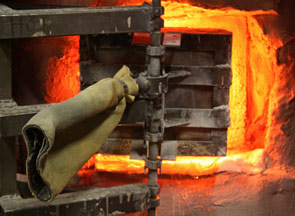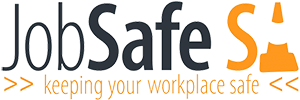Glass
 Putting it simply, manufacturing means the physical or chemical transformation of materials into new products or parts of products, in this industry the product is glass. In today’s world, the way this is done is high tech, requires a high level of skill and is often extremely challenging. Our ageing population means that for every four retiring workers only one will be replaced if current participation rates continue. This put enormous pressure on the current workforce, which often puts worker health and safety in the background.
Putting it simply, manufacturing means the physical or chemical transformation of materials into new products or parts of products, in this industry the product is glass. In today’s world, the way this is done is high tech, requires a high level of skill and is often extremely challenging. Our ageing population means that for every four retiring workers only one will be replaced if current participation rates continue. This put enormous pressure on the current workforce, which often puts worker health and safety in the background.
INJURIES
The main causes of injury in the glass manufacturing industry are:
- Musculoskeletal disorders (MSDs)
- Skin disease, e.g. Dermatitis
- Respiratory disease, e.g. Occupational Asthma
- Burns
THERMAL GLASS BURNS
Work-related burns account for 20%-25% of all serious burns requiring hospital attention. Workplace burn injuries account for about 5% of all workplace deaths. Thermal burns are generally the most common type of burn in the glass industry. They result from exposure to or contact with steam, flames, hot surfaces or hot liquids with a temperature above 46º C.
The extent of damage depends on the temperature of the surface and how long the skin is exposed to it. In many instances, burns sustained in these situations occur to the hands, but can also affect other extremities that come in contact with the hot liquid. Adherence to workplace safety procedures is essential to preventing these serious burn injuries.
Burn Severity – The Four Degrees of Workplace Burn Injury
Burns represent damage to any of the skins three layers and deeper tissues caused by thermal or chemical damage. The following categories pertain to thermal burn injuries.
First-degree burns: Damage to outer skin layer (epidermis) causes redness and mild pain. These burns, which include sunburns, heal within 3-5 days.
Second-degree burns: Burn damage extends deeper into the second layer (dermis) to cause blistering in addition to redness. These burns heal within 1-3 weeks.
Third-degree burns: Burn damages all 3 skin layers and causes severe swelling. The area of burn injury can be white, black, red, or brownish. These severe burns are often not painful as nerves are typically severed. Scarring often occurs and burn recovery may require skin grafts.
Fourth-degree burns: The most severe burn, burn damage extends to all skin layers and can damage muscle and bone. Skin grafts do not work to heal these burns. Fourth-degree burn victims require amputation if injury occurs in a limb/extremity.
First Aid for Workplace Burns
FOR MINOR BURNS
1. If the skin is unbroken, run cool water over the area of the burn or soak it in a cool water bath (not ice water). Keep the area submerged for at least 5 minutes. A clean, cold, wet towel will also help reduce pain.
2. Calm and reassure the person.
3. After flushing or soaking, cover the burn with a dry, sterile bandage or clean dressing.
4. Protect the burn from pressure and friction.
5. Over-the-counter ibuprofen can help relieve pain and swelling.
6. Minor burns will usually heal without further treatment. However, if a second-degree burn covers an area more than 2 to 3 inches in diameter, or if it is located on the hands, feet, face, groin, buttocks, or a major joint, treat the burn as a major burn.
FOR MAJOR BURNS
1. Call 000.
2. Make sure that the person is no longer in contact with smouldering materials. However, DO NOT remove burnt clothing that is stuck to the skin.
3. Make sure the person is breathing. If breathing has stopped, or if the person’s airway is blocked, open the airway and perform CPR.
4. Cover the burn area with a dry sterile bandage (if available) or clean cloth. A sheet will do if the burned area is large. DO NOT apply any ointments. Avoid breaking burn blisters.
5. If fingers or toes have been burned, separate them with dry, sterile, non-adhesive dressings.
6. Elevate the body part that is burned above the level of the heart. Protect the burnt area from pressure and friction.
7. Take steps to prevent shock . Lay the person flat, elevate the feet about 12 inches, and cover him or her with a coat or blanket.
8. Continue to monitor the person’s vital signs until medical help arrives – pulse , rate of breathing, and blood pressure.
DO NOT apply ointment, ice, medications, or cream to a severe burn.
DO NOT disturb blistered or dead skin.
DO NOT remove clothing that is stuck to the skin.
DO NOT give the person any food or drink if there is a severe burn as this may affect their treatment at the hospital.
DO NOT immerse a major burn in cold water. This can cause shock.
DO NOT place a pillow under the person’s head if there is an airway burn. This can cause the airway to close.
HAZARDS
Shiftwork fatigue is a very serious hazard in the glass manufacturing industry. With the nature of shiftwork meaning that many people are working into the night, the distribution in normal sleeping patterns can lead to fatigue.
SHIFTWORK FATIGUE
15-20 per cent of people in industrialised countries are doing night work, weekend work or other types of shiftwork. This can result in fatigue which increases the risks of accidents occurring. The fatigue levels of personnel have been a contributing factor in some very serious industrial accidents.
After having been awake for 17 hours straight a persons driving ability is equal to that of a person with a 0.05 blood alcohol level. Being awake for 24 hours is equivalent to a blood alcohol level of 0.1, double the legal limit.
What is fatigue?
Fatigue is a general term used to describe the feeling of being tired, drained or exhausted. It is mental or physical exhaustion that stops a person from being able to function normally.
People who are fatigued generally experience:
- poor judgment
- impaired senses
- slower reactions times
- impaired hand-eye coordination
- decreased skills, such as in vehicle control
Lack of adequate sleep is the major cause of fatigue, however it can also occur through insufficient sleep in the recent past and by delaying sleep when you would normally take it, high levels of stress and certain medical conditions. As well as Insomnia, there are sleep disorders that may cause fatigue without the affected person knowing, such as Restless Leg Syndrome or Sleep Apnoea. If you think you have a sleep disorder make an appointment to see your doctor as soon as possible.
Fatigue Management
- It is important to be aware of the way different rosters can increase your chance of fatigue if not managed.
- regular day shifts carry the lowest risk of fatigue.
- risks increase with afternoon shifts as often you can not get to bed, and to sleep until after midnight.
- night shifts carry the highest risk as this is when the body is most ready for sleep.
As an employee it is your responsibility to be fit for work. This means not only turning up in a sober drug free state, but also well rested.
Tips for managing fatigue
- have a short sleep before you shift.
- do some moderate exercise before starting work, which helps to increase your alertness during the shift.
- have bright lighting.
- vary your work at the times you feel most drowsy, if possible.
- walk around during breaks.
- keep in contact with co-workers as this helps you both stay mentally alert.
- consider using public transport or taxis rather than driving if possible, or share the driving responsibility with a co-worker.
- Try to follow a similar routine to the one you follow before a normal nights sleep.
- Make the environment favourable for sleeping e.g. ask family or flatmates not to disturb you, turn you mobile off, pull the curtains over your window.
Other hazards in the manufacturing industry include:
| Noise | Plant/Machinery | Slips and Trips |
| Hot/ Cold Environments | Fatigue | Manual Handling |
| Hazardous Substances | ||
Note:
Many companies have been found in breach of their OHS obligations to employees. Take an informative look at the successful prosecutions by SafeWork SA
Acknowledgements:
Workcover ACT – www.workcover.act.gov.au
SafeWork SA – www.safework.sa.gov.au
WorkSafe Victoria – www.worksafe.vic.gov.au
